
SKU: K1010002
| Size / Description | Price/Ea. | Qty | ||
|---|---|---|---|---|

|
Bottle, 32oz
Buy 2 or more: $18.20 each
|
$19.20
|
||

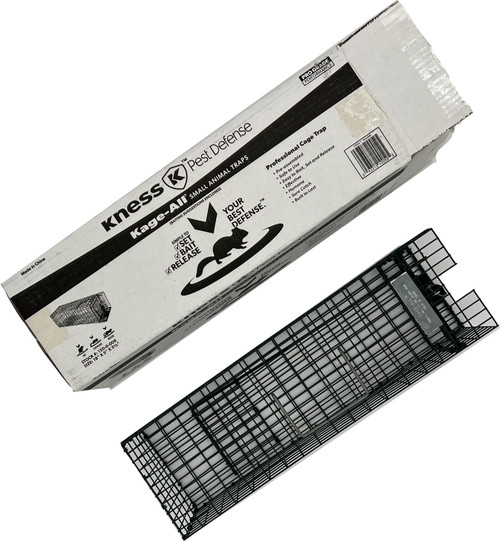
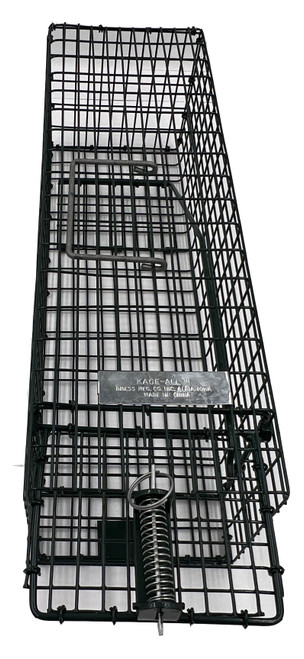
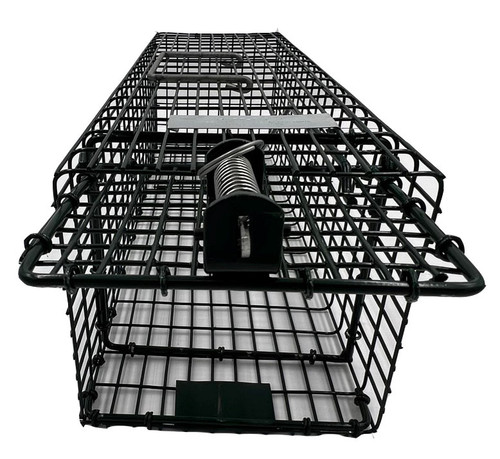
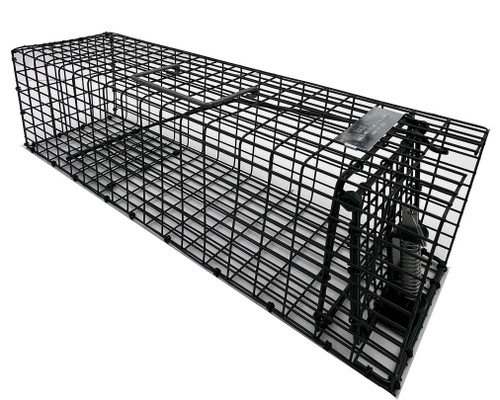
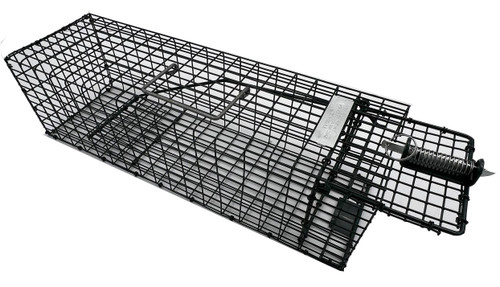









SKU: K1010002
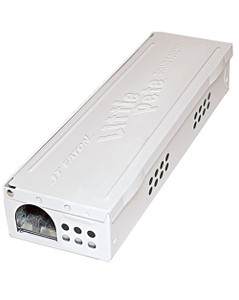
SKU: 4MJ423WH

SKU: KPROKETCH

SKU: JT424CL-WH

SKU: JAWZ409-6
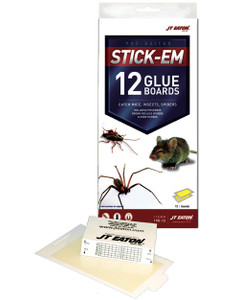
SKU: 198-12-3Pk

SKU: JAWZ410-2
Kness live animal traps are the safe and humane way to deal with small animal problems. From chipmunks to raccoons, Kness small animal traps capture pests and out-of-place animals of a variety of sizes. Easily catch the animal that’s running around in the attic or destroying your yard, then release them far away to ensure they stay clear of your home for good. Kage-All® Small Animal Traps are custom-designed to trap live animals, like chipmunks, squirrels, raccoons, opossums, and woodchucks. These traps are constructed of galvanized steel and rust-resistant, to last through many years of use.
Simply lift the ring on the bayonet latch to open the door. Move the set rod forward so that it supports the door cross rod member and holds the door open. Test the tripping mechanism by pushing down on the treadle area. This action moves the trip rod and causes the door to shut and automatically lock. Select a spot frequented by pests and place the selected bait at the extreme end of the trap, opposite the entry door. Your live trap is now set! Choose a spot frequented by pests. Place the selected bait at the extreme end of the trap, opposite the entry door. You’re now ready to trap live animals the safe and humane way with Kage-All.
|
Galvanized Powder Coated Wire |
|
|
Protected Bait Area |
|
|
Protected Working Parts |
|
|
Large Trip Treadle |
|
|
Ground Guard |
|
|
Bayonet Spring-Loaded Door Latch |
|
Weasel Facts:
Weasels live in a variety of habitats, such as open fields, woodlands, thickets, roadsides and farmlands. They typically thrive in environments abundant with small prey (like small rodents) and with an available source of water. Most weasels live in either abandoned burrows, or nests under trees or rock piles. Weasels are carnivores that mainly prey on small vertibrates. They are adept hunters that eat around 40% of their body weight each day. Rodents make up a large part of their diets, although they are known to be opportunistic predators that will feed on whatever’s available to them.
Signs:
While many homeowners benefit from the presence of weasels as they often control rodent populations, weasels can be a nuisance when they gain access to poultry houses and prey on fowl or pets.
Signs of weasels and their damage include:
- Killed poultry, often bitten in the head or neck
- Stolen poultry eggs
- Killed rabbits
- Weasel tracks: small footprints with five toes and visible clawmarks on each foot
How to Catch a Weasel:
With negative impacts that include harm to animals to other nuisances, weasels may become a pest around your home. If you’re wondering how to catch a weasel on your property, follow these tips:
Determine Weasel Trap Placemen:
Find a location for your trap — preferably where they’ve been causing damage. If you haven’t yet located specific damage, place your trap (such as Kness’ Kage-All® Small Animal Trap) alongside the closest source of water, which your weasels most likely frequent to keep hydrated.
The best locations for your weasel trap include:
- inside a barn or poultry house
- beside a chicken coop or pen
- at the base of a commonly-raided tree
- along a stream or creek
It’s very important to pinpoint a location that’s well covered; weasels almost never hunt out in the open and are more likely to enter your trap in a protected area.
Select and Position Bait:
Use fresh meat, if possible. Position your bait strategically, so that the weasel must bring its entire body into the trap and step on the trigger plate to get to it. Make sure that the bait is far enough from the trap walls that an animal cannot reach inside and steal it without entering.
Check Trap Frequently:
Monitor your trap so that you can take care of the weasel promptly once he’s captured. Animals should never be left in cage longer than necessary, as they can quickly grow anxious, hungry, thirsty and overheated the longer they are trapped without food and exposed to the elements.
Once Caught:
Weasels are known to bite, so wear heavy gloves whenever handling the trapped animal and refrain from sticking your fingers inside the trap. Approach and handle the trap in a calm and steady manner in an effort to keep the animal calm as well. If local laws permit, relocate the weasel to another similar environment at least 10 miles from your property.
Trivia:
Activity:
Since they do not hibernate, weasels are active all year long. Depending on the climate and season, they may display nocturnal or diurnal behavior.
Reproduction:
Females reach sexual maturity at about 3 months of age. Mating typically occurs in late spring and summer and gestation periods vary with the species.
Hunting:
Weasels are cunning and adept predators that hunt prey tirelessly throughout the day and night. They’re skilled climbers, swimmers and runners. Their long, slender bodies allow them to raid underground burrows, follow rodents into small spaces and wrap themselves around larger prey to hold them still. Weasels often kill more prey than they can eat, storing the overkill for later consumption.
Social Behavior:
Aside from when they are mating or weaning young, weasels are solitary animals that fend for themselves in the wild. They are known to be territorial, defending their home ranges when invaded.
RABBIT FACTS:
Adult cottontail rabbits are 15-19 inches long and weigh 2-4 pounds. The ears are large and the hind feet are larger and longer than the front feet. Color range is gray to brownish gray. The tail of this rabbit looks like a tuft of cotton, giving this rabbit its name. The cottontail's habitat is wherever there is long grass or brush to serve as cover and an adequate food supply. Cottontails usually spend their entire lives in an area the size of ten acres or less and rarely move farther than a mile, seasonally, because of the scarcity of food supply. The eastern cottontail rabbit is found in the entire area east of the Rocky Mountains in the United States. This type of rabbit is also found in the southern parts of Canada, parts of Mexico and South America. Cottontails are herbivores. Any living plant is potential food for them. Garden crops, flowers and ornamental plants are common targets in urban areas. In the wild, cottontails survive on a variety of vegetable material.
SIGNS OF RABBITS:
The presence of a cottontail is usually characterized by damage to garden plants, ornamental flowers, and shrubs. The appearance of gnawed older woody growth, clean cut clippings of young stems, distinctive dark brown, round, pea-size droppings and tracks of cottontail identify their presence.
RABBIT TRAPPING TIPS:
Cottontails are relatively easy to catch alive with cage traps such as the Kness Kage-All® Small Animal Trap. Set cage traps in garden and yard areas where rabbits are a problem. Light concealment of the trap is recommended. Set the Kness Kage-All® between bushes or between garden rows. Carrots and apples make good bait for cottontail rabbits. Cut the bait into small pieces and create a trail leading into the trap, making sure the bait is visible to the animal. After the rabbit is trapped, relocate the animal a significant distance away.
Rabbits are relatively easy to catch alive with cage traps such as the Kness Kage-All Small Animal Trap. Set cage traps in garden and yard areas where rabbits are a problem. Light concealment of the trap is recommended. Set the Kness Kage-All® between bushes or between garden rows. Carrots and apples make good bait for rabbits. Cut the bait into small pieces and create a trail leading into the trap, making sure the bait is visible to the animal. After the rabbit is trapped, relocate the animal a significant distance away.
+ Read More
- Read Less
"Put Question Description"
Put Question Description

